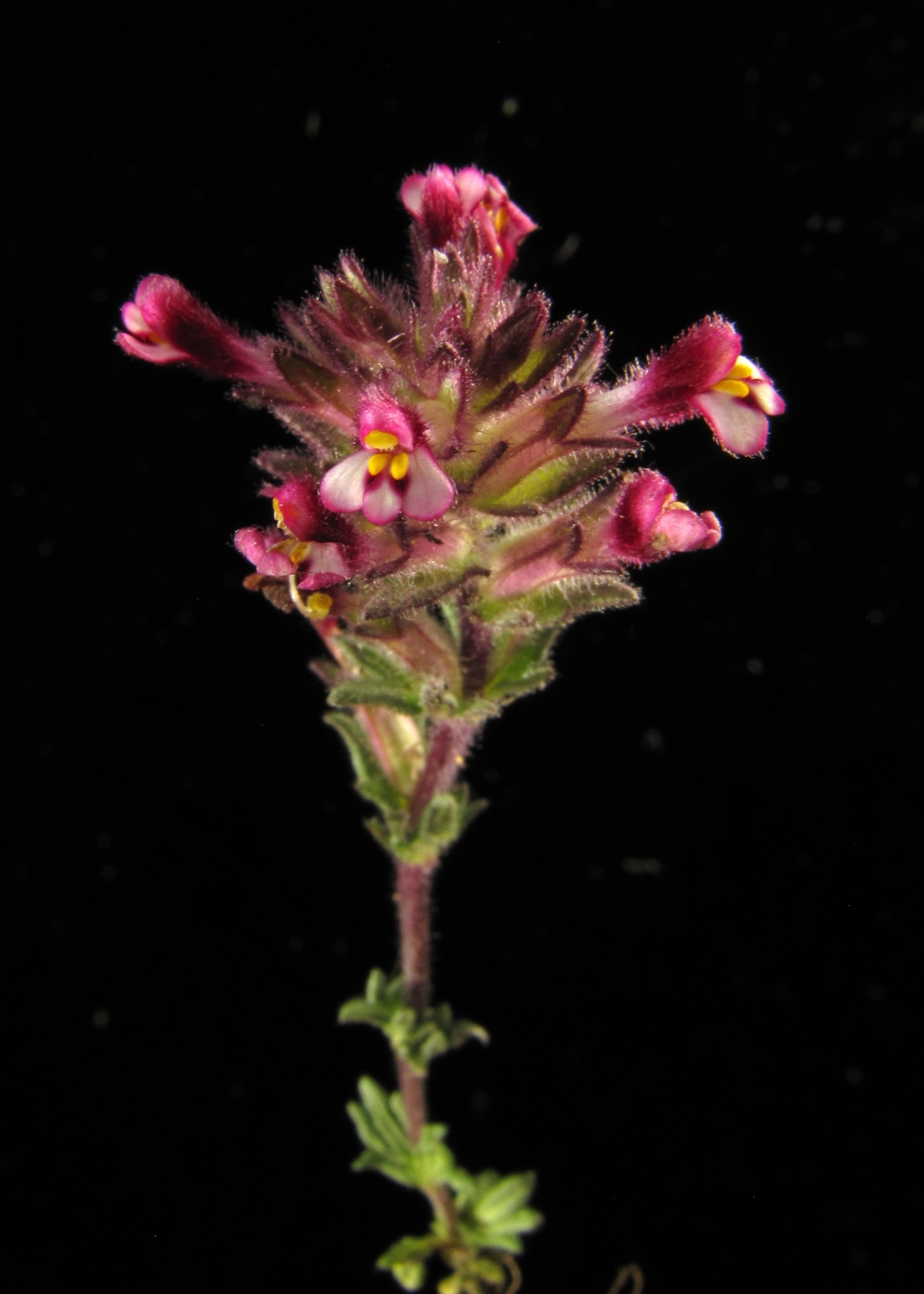Orobanchaceae
Perennial, biennial or annual herbs (rarely shrubs), with or without chlorophyll, partly (hemiparasites) or wholly (holoparasites) parasitic on roots of other plants via haustoria; stems ascending to erect. Leaves opposite (mostly) or alternate, or lacking, lamina often toothed or lobed; stipules absent. Flowers bisexual, in a terminal spike; bracteoles absent; calyx of 4 or 5 parts, often unequally divided; corolla tubular to some extent, bilabiate, 5-lobed; stamens 4, often in pairs of unequal length, anthers 2-celled, often basally awned, dehiscing by slits; ovary superior, l- or 2-locular, celled, with axile or parietal placentation, stigma 2-lobed. Fruit a capsule; seeds numerous, small, often reticulate or trabeculate, endospermous.
About 100 genera and c. 2100 species, largely in temperate regions of the Northern Hemisphere; 11 genera and c. 30 species in Australia. Earlier classifications included most genera other than Orobanche within a broadly circumscribed Scrophulariaceae.
Barker, W.R. (1999). Orobanchaceae. In: Walsh, N.G.; Entwisle, T.J., Flora of Victoria Vol. 4, Cornaceae to Asteraceae, pp. 539–541. Inkata Press, Melbourne.
 Spinning
Spinning


